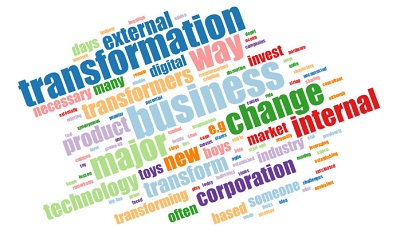
Many children play with Transformers toys while growing up (and some grown-up kids still do!). In their prime, the Transformers fascinated the imaginations of children, and although technology has made the idea of a toy transforming from one form to another fairly novel; a basic element of transformation stays the same – transformation is external. In the movies based on the popular toys, the Transformers change quite remarkably externally but their characters remain the same inside which at times limits their potential. In that lies a lesson that can be applied to business transformations.
Most, arguably all, industries today are faced with the challenges of digital disruption. This is often seen as the crippling of major, established companies by nimble, agile start-ups; often running on shoe string budgets, that are leveraging technology to offer a new way of doing business to a market. In many ways this is synonymous with Blue Ocean Strategy – establishing a business based on an existing product in previously uncontested market space. Ride sharing (e.g. Uber) is the digital equivalent in the taxi industry of what big-box stores (e.g. Home Depot, Bunnings) were to the hardware industry in the 90’s.
Roll-in the business transformation consultant, to advise the major corporation on how to respond to the fact someone is (or could be) offering a product much like theirs in a way that just seems so obvious now someone is actually doing it! The major corporation must transform, else it will become irrelevant. Strategic planning days, workshops, idea-fests, internal hack days; you name it, the major corporation throws its full weight into transforming the way it presents itself and does business with customers.
All worthwhile, all necessary. But not enough.
A major differentiator in corporations that successfully transform is they embrace an internal change to compliment the external transformation. That is, they ensure they invest not only in the technology and/or capital infrastructure necessary to transform the way they do business; they invest in important ‘back-office’ changes as well. Their policies, people, structures and systems receive the proportionate (sometimes a greater) investment required to change the organisations internal workings to support the transformed exterior. They in-still the new way of doing business at a deep (i.e. cultural) level than the new product, branding and advertising can achieve.
Put simply: transformation is external, change is internal; transformation is only sustainable when it comes with change.
